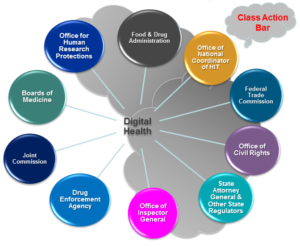
Guardians of Standards: Healthcare Regulatory Bodies
In the intricate landscape of healthcare, regulatory bodies stand as vigilant guardians, ensuring that the highest standards are maintained for the well-being of the public. Let’s dive into the world of these oversight entities, exploring their crucial role in upholding quality, safety, and ethical practices within the healthcare ecosystem.
The Watchful Guardians: Introduction to Regulatory Bodies
Regulatory bodies in healthcare play a pivotal role in overseeing and regulating various aspects of the healthcare industry. From accrediting healthcare facilities to licensing healthcare professionals, these entities act as watchful guardians, safeguarding the interests of patients and the broader community. Their mandate is to establish and enforce standards that promote excellence in healthcare delivery.
Setting the Bar: Establishing Standards and Guidelines
One of the primary responsibilities of healthcare regulatory bodies is to set the bar for standards and guidelines within the industry. They meticulously define the criteria for healthcare facilities, practitioners, and services, ensuring that they meet the established benchmarks for quality, safety, and ethical conduct. By doing so, regulatory bodies contribute to the overall improvement of healthcare services and protect the public from substandard practices.
Explore the dynamics of Regulatory Bodies in Healthcare for a comprehensive understanding.
Licensing Healthcare Professionals: Ensuring Competence and Ethics
Healthcare regulatory bodies are entrusted with the task of licensing and credentialing healthcare professionals. This involves a rigorous evaluation of qualifications, competence, and adherence to ethical standards. By licensing practitioners, these bodies not only ensure that individuals are qualified to provide care but also create a system of accountability, where ethical conduct is paramount for maintaining professional status.
Accrediting Healthcare Facilities: Quality Assurance in Action
Beyond individual practitioners, regulatory bodies extend their oversight to healthcare facilities. Accreditation is a process through which these bodies evaluate and certify that facilities meet predetermined standards for quality and safety. Accredited facilities signify a commitment to excellence, assuring patients that they will receive care in an environment that prioritizes their well-being.
Protecting Patient Rights: Advocating for the Vulnerable
Healthcare regulatory bodies are advocates for patient rights and welfare. They establish protocols to handle complaints and concerns, ensuring that patients have a channel to voice their grievances. By actively addressing issues and holding healthcare providers accountable for their actions, regulatory bodies contribute to the protection of patient rights and the maintenance of trust between healthcare professionals and the public.
Continuous Monitoring and Evaluation: A Dynamic Oversight Approach
Regulatory bodies operate on a principle of continuous monitoring and evaluation. This dynamic approach involves regularly assessing healthcare practices, facilities, and professionals to ensure ongoing compliance with established standards. By staying vigilant and proactive, these bodies adapt to the evolving landscape of healthcare, addressing emerging challenges and fostering a culture of continuous improvement.
Responding to Emerging Challenges: Agility in Action
In an ever-changing healthcare landscape, regulatory bodies demonstrate agility in responding to emerging challenges. Whether it’s the introduction of new medical technologies, evolving healthcare delivery models, or global health crises, these bodies adapt regulations and guidelines to address the contemporary needs of the industry. This adaptability ensures that the regulatory framework remains relevant and effective.
Global Collaboration: Sharing Best Practices
Healthcare regulatory bodies often engage in global collaboration, sharing best practices and insights with their counterparts worldwide. This international cooperation allows regulatory bodies to learn from each other, adopt successful strategies, and contribute to the harmonization of global healthcare standards. The exchange of knowledge ensures that regulatory practices remain robust and effective on a global scale.
Balancing Regulation and Innovation: Navigating a Fine Line
While regulatory bodies are essential for ensuring safety and quality in healthcare, they also face the challenge of balancing regulation with the need for innovation. Striking the right balance requires an understanding of how to foster innovation while maintaining safeguards for patient well-being. Regulatory bodies play a crucial role in creating an environment where advancements can thrive without compromising safety.
Public Awareness and Education: Empowering Informed Choices
Healthcare regulatory bodies contribute to public awareness and education by disseminating information about healthcare standards and patient rights. Empowering individuals with knowledge allows them to make informed choices about their healthcare providers and services. This transparency fosters a sense of trust in the healthcare system and encourages active participation in one’s own healthcare journey.
Embark on a journey into the world of healthcare oversight, where regulatory bodies serve as the guardians of standards, ensuring that the health and well-being of the public remain at the forefront of healthcare practices. It’s a realm where vigilance, continuous improvement, and a commitment to excellence converge to shape a healthcare landscape that prioritizes quality, safety, and ethical conduct.


